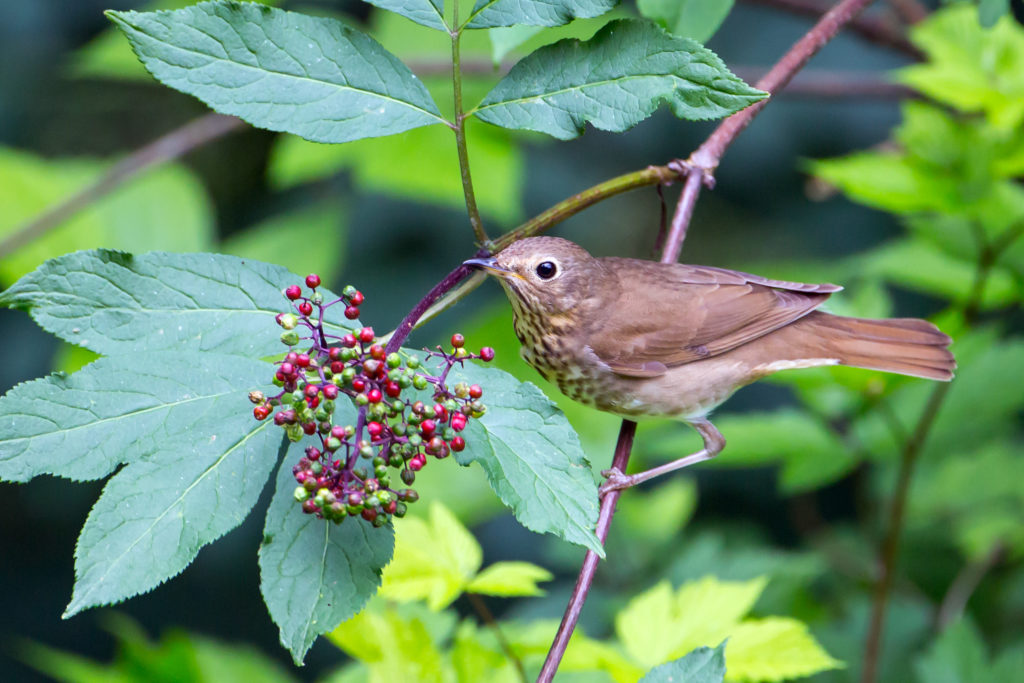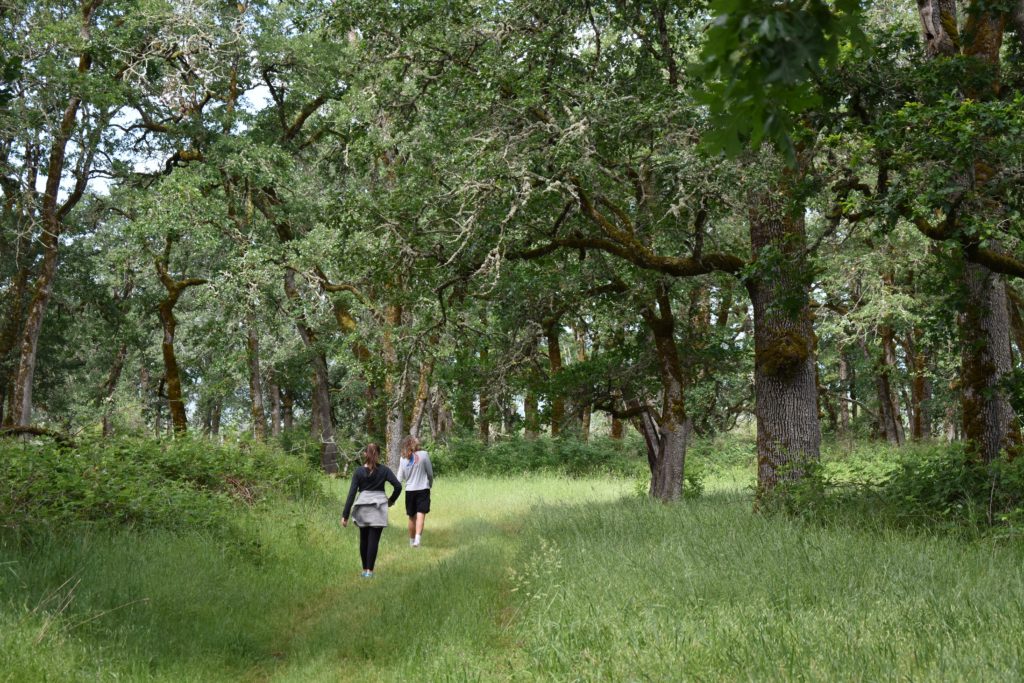Forestry for the Birds in Western Oregon

The cover of the Guide published in 2022.
Written by Maura Olivos
After three years, with funding from Tualatin Soil and Water Conservation District, Oregon Community Foundation, and the assistance of a dedicated advisory committee comprised of local agencies, the Forest Stewards Guild has developed and published Forestry for the Birds: Western Oregon – A guide to enhancing forest habitat for birds and humans (the Guide). This benchmarking effort was made possible with the technical assistance and support of the Oregon Department of Forestry, Oregon State University, Portland Audubon, Trout Mountain Forestry, Tualatin Soil & Water Conservation District, and the U.S. Geological Survey.
The purpose of the Guide is to act as a communication tool for natural resource service providers and forest landowners to support healthy forests with birds in mind. The Guide focuses on forest structure, habitat characteristics specific to 12 focal birds across eight forest types, and long-term management at any stage or condition of a forest. The Guild will be distributing 1,000 copies throughout the year to partners, forestry professionals, and landowners. Additional workshop resources are also in development and will be supplied, free to all, on the Guild website once completed, including an easy access and printable online version of the Guide.

Douglas Fir Forest – By Brandy Saffell, Tualatin SWCD, 2021
Workshops
The Guild is offering three workshops for the Spring of 2023. Each of the workshops are partnered with local service providers – including two Soil and Water Conservation Districts (SWCD) and Oregon Small Woodland Association (OSWA) – and targeted towards natural resource professionals and woodland caretakers. Each workshop has been pre-approved for 3 SAF (Society of American Foresters) continuing education credits. Other credits are being requested (such as ISA). Please find additional information on available workshops at the links below.
- Western Oregon Urban Forests for the Birds
- Forestry for the Birds – Western Oregon: A Workshop for Forestland Caretakers
- Forestry for the Birds – Western Oregon: A Workshop for Natural Resource Professionals

Brown Creeper – By Mick Thompson, 2016
The Flight from East to West
Foresters for the Birds was originally developed with Audubon Vermont and Vermont Department of Forests, Parks, and Recreation in response to declining forest bird populations. It was recognized across the northeast and nation, that many of our forest and woodland tracks are on private lands. This provided a focus for the program on the engagement of woodland owners. With an eye and hear on songbirds, some of the most charismatic woodland occupants, the success of the program is within the integration of silviculture and songbird habitat enhancement. The program supports foresters with tools for effectively communicating with landowners and managers about the benefits of managing forests with bird habitat in mind. As practices are implemented to support songbird habitat, reciprocally the presence of certain bird species indicates the presence of specific forest structure elements and forest health conditions. Now the program exists in various forms (Forestry for the Birds or Bird-Friendly Forestry) within the Southeast, Midwest, and now Pacific northwest, and soon to be within the Intermountain west.

Swainson’s Thrush – By Mick Thompson, 2014About the Guide
Forestry for the Birds: Western Oregon uses the science behind birds, forestry practices, and community engagement to offer a guide for greater forest health across the Western Oregon landscape. The Guide breaks down Western Oregon by the most common forest types within each ecoregion: Klamath mountains, Willamette Valley, Western Cascades, and the Coast Range. The focal bird species chosen are common birds that range across the Western Oregon landscape yet have specific habitat associations with the forest types highlighted in the Guide. With a focus on forest structure from the ground to the canopy the Guide walks practitioners, landowners, and other forest stewards through a process to identify birds, forests, and forestry associations in developing a unique approach to goal setting and forest management.

Oak Woodland, Sauvie Island – By Nicole Ruggiero, Tualatin SWCD, 2019
Some of the notable inclusions within this Guide are the incorporation of riparian and oak habitats. As policies change for forest lands, the Guide is aptly timed to provide a greater perspective to the function of riparian zones. Riparian habitats serve as a hub for diverse forage and source for regeneration of nearby gaps and recent harvests through birds, which is one of many roles’ songbirds play in the bigger picture of forest health. In addition, recognition is brought to Oregon’s native oak trees from the Klamath ecoregion all the way up to the Columbia River. Oaks are not commonly thought of as a forest or forest product, yet they have played a historic ecological and cultural role in Western Oregon’s landscape and may still be reprised as this landscape responds to changes in climate and management.

Hermit Warbler – By USFWS licensed by Creative Commons 2.0.
It is well known that songbirds are incredible indicators of environmental conditions, as the canary in the mine wistfully comes to mind. With rapidly changing forest landscapes, birds continue to play a role as indicator species and the Guide honors this role by applying it to forestry. With birds in mind and in response to a changing forested landscape, this Guide purposely focuses on common bird species with the goal of keeping common birds common, and forests forested, across the Western Oregon landscape. “Forestry for the Birds gives land managers of all backgrounds a new and transformative lens for forest management and opens a whole new world on a walk in the woods” remarks Forest Conservation Specialist, Brandy Saffell from Tualatin SWCD.
To learn more about the development and application of the Forestry for the Birds: Western Oregon Guide join the Forest Stewards Guild and partners at an upcoming workshop this spring. If you are interested in bringing a Forestry for the Birds workshop to your community within Western Oregon, contact Maura Olivos, maura@foreststewards.org.
